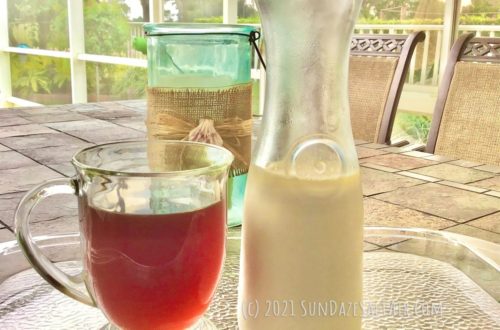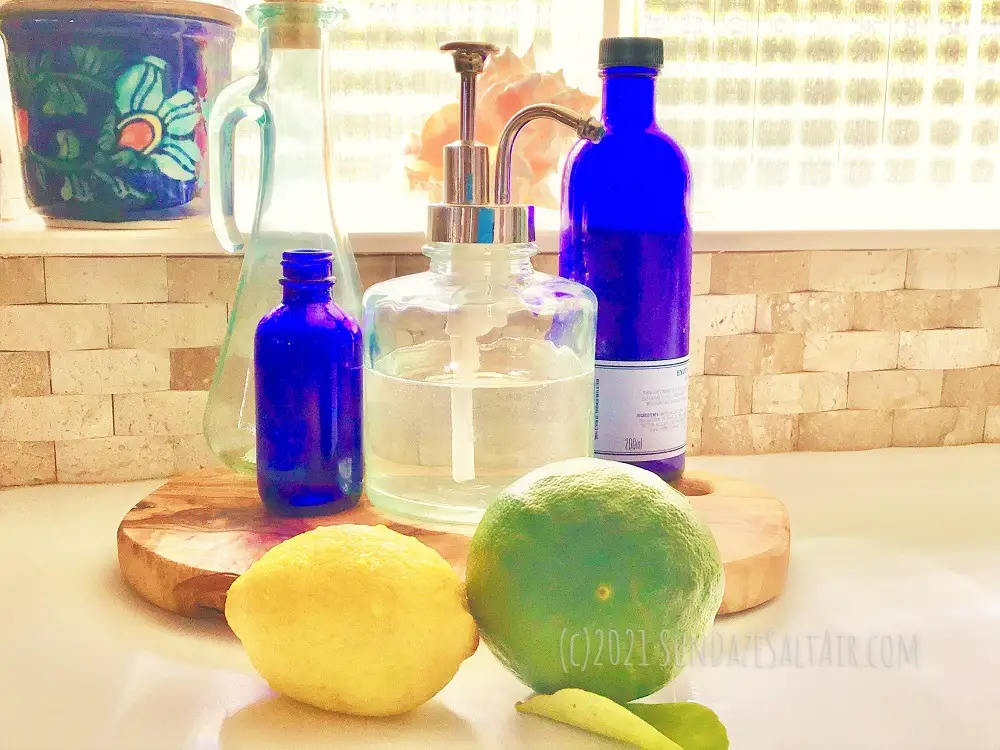
DIY Liquid Hand Soap: How To Turn Bar Soap Into Luxurious Liquid Soap, Save Money & Never Run Out Of Soap
DIY Liquid Hand Soap By Repurposing Common Household Items
It seems we use more hand soap these days than ever before so I was not too happy to see bare shelves at the local store where hand soap and other cleaning products used to be. Once again certain cleaning supplies are becoming harder to find. If you are noticing the same thing where you live, well, no need to stock-pile like it’s the apocalypse. DIY liquid hand soap is actually unbelievably easy and cost-efficient to make with common household items. So, why then are we so reliant on the store-bought stuff? Apparently, we have forgotten, or maybe never knew, some basic “home arts” of kitchen alchemy as we have come to completely depend on certain commercially-sold items, including liquid hand soap for our kitchens and bathrooms.
Now, shortages coupled with climbing prices requires us to tap into our resourcefulness, much like our grandparents did in their day. However, once you see how easy DIY liquid hand soap is to make, you may never want to buy the store-bought stuff again. Most importantly perhaps, DIY-ing your soap allows you to skip the harsh, irritating, skin-stripping ingredients and chemicals present in most manufactured hand soaps and replace them with healing or soothing ingredients.
So, here are a few simple and easy DIY liquid hand soap recipes to do just that…
Not to mention, now you can always have liquid hand soap “on hand” when needed, and never have to rely on out-of-stock stores, or be at the mercy of disrupted supply chains again.
Why Make Your Own DIY Liquid Hand Soap? Three More Good Reasons
In addition to outsmarting store shortages and saving money, let’s look at a few more good reasons to make your own DIY hand soap…
1. Most Store-Bought Liquid Hand Soaps Are Made with Harsh Sulfates Or Detergents
Most common commercially-available soaps, including hand soaps, contain Sodium Laurel Sulfate or “SLS” or Sodium Laureth Sulfate or “SLES”. What’s so bad about SLS or SLES? First off, SLS and SLES are harsh industrial-grade detergents or surfactants found in all kinds of cleansers from body wash to shampoo to laundry and dish detergent. It begs the question, “Should you really being washing your hands, body and hair with the same detergent you use on your dishes and laundry?”
The presence of SLS and SLES is ubiquitous in all these products because, as super sudsy cleansing agents, they are very effective at breaking down surface tension which makes for a highly efficient cleanser. Because they are so effective at breaking down these barriers, they are also highly effective at irritating and stripping the acid mantle barrier of your skin as well.
This destructive process is the gateway to a variety of skin disorders, including eczema or psoriasis. If your skin always feels tight and dry after washing, well, that is a big sign that your skin’s barrier is being disrupted.
2. Harsh Surfactants Like SLS & SLES Tend To Strip Your Skin Of Moisture Triggering A Vicious Cycle
In addition, during the process of making these cleansers or detergents, known as saponification, the manufacturer often ends up removing some of the good by-products of this process, most notably, glycerin. It then replaces it with less expensive chemicals and additives. Removing the glycerin produced during saponification is a common practice since glycerin is a highly valuable substance with water-attracting humectant properties. Glycerin is then often sold to other companies which use it to make creams and moisturizers which your skin, now totally dehydrated from the harsh detergent “soap,” desperately needs to restore it to its moist, hydrated pre-detergent state.
As you can see, store-bought detergent-based soaps tend to strip the moisture from your skin forcing you to rely on moisture-replenishing lotion to undo that tight, stripped feeling. It’s a vicious cycle that never ends.
If SLS and SLES have minimal valuable benefits for the skin, why then are they such common ingredients in hand, body, hair and even face soaps? Of course, they are very cheap and readily available. You can avoid this never-ending, depleting cycle by trying to avoid store-bought soaps made from SLS or SLES.
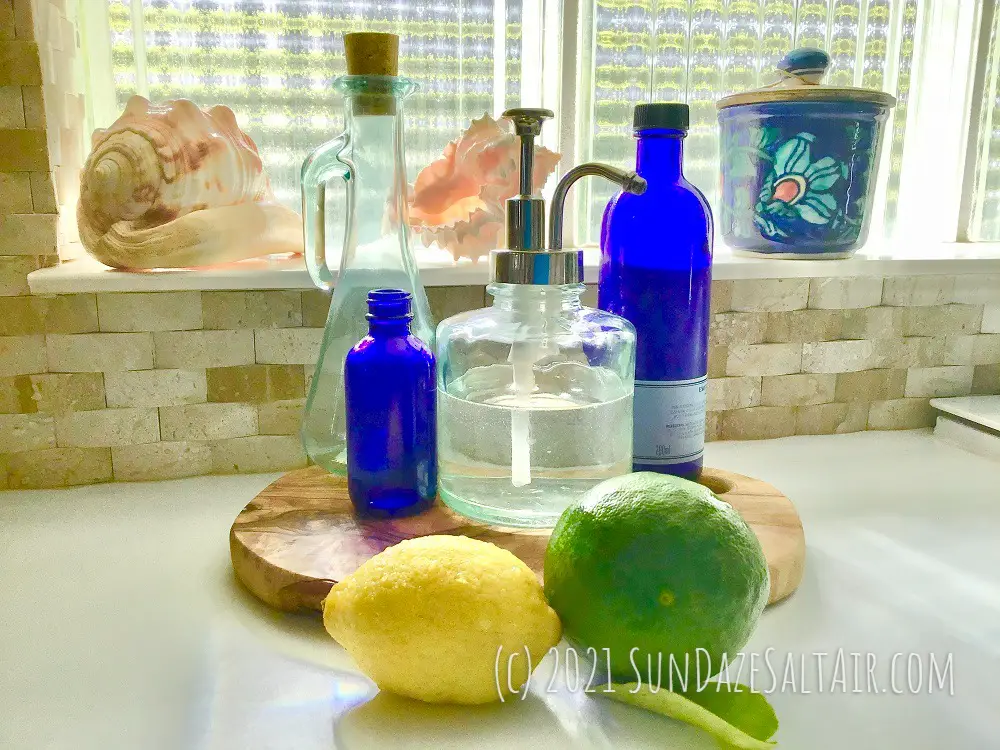
3. DIY Soap Is Totally Versatile & Customizable
Only you know your specific, unique skin needs. The beauty of DIY hand soap is its versatility. Since you are in control of the ingredients, you can customize it however you want to suit your skin’s particular requirements, and add more soothing elements that you may not find in store-bought hand soaps.
Now, let’s make and customize our DIY liquid hand soap….
Method #1: Make Your Own DIY Hand Soap With Castile Soap
Choose SLS & SLES Alternatives Such As Castile Soap
In contrast to SLS and SLES, pure Castile soap is made from safe, natural plant oils, most traditionally olive oil. It does not contain any animal fats and gets its name from the olive-rich region in Spain where it originated. When made with organic ingredients, it is both non-toxic and biodegradable. During saponification, Castile soap sometimes retains by-products of the natural fatty oils, including glycerin, which are typically removed when SLS or SLES detergents are made.
Are There Any Cons To Using Castile Soap?
Castile soap is not a detergent like SLS or SLES. Lacking the harsh chemical ingredients of these soaps, Castile soap should not strip all the natural oils from your skin the way SLS and SLES detergents can. However, on its own, of course, Castile soap still may not be moisturizing enough for dry skin. Castile soap, like all soaps, is alkaline by nature, so it does remove more oils than it adds. So, while it is less stripping to your skin’s barrier than SLS or SLES detergents, you can still make your DIY liquid hand soap version even more skin-softening by adding additional soothing ingredients such as honey or Vitamin E.
Bottom-line: While Castile soap is a good choice as the basis for your DIY liquid hand soap, be sure to customize it with the addition of other soothing, hydrating ingredients.
***You can skip straight to the recipe below titled, “DIY Natural Hand Soap Recipe #1 Using Castile Soap” or keep reading for information on making liquid soap from bar soap & how to scent your DIY liquid hand soap…
Method #2: DIY Liquid Hand Soap Without Castile Soap Made By Melting Down Bar Soap
While liquid Castile soap is the most recommended base for DIY liquid hand soaps, it may not always be readily available. And when you do find it, sometimes the high price tag defeats the purpose when one of your goals is to save money. Thankfully, you can also use natural bar soaps, such as oil or glycerin-based bar soaps, and then simply melt them down. Yes, you can melt down inexpensive bar soaps and turn them into customizable DIY liquid hand soap.
And, if you are like me, I’m sure you have more than a few bars of soap you’ve collected through the years lying around…
Of course, you will still want to read the labels on any bars of soap you choose to ensure you only use soaps with ingredients that suit your skin, such as pure organic oils or fats.
***Once you choose your bar soap of choice below, you can skip down to the recipe below titled, “DIY Natural Hand Soap Recipe #2 Using Bar Soap (With Or Without Castile Soap)” or keep reading for information on scenting your DIY hand soap…
Castile Soap Alternatives
- Glycerin. Vegetable glycerin is a great alternative to liquid Castile soap. Glycerin is ideal for soaps you plan to use on your skin, rather than for laundry or cleaning, since it is a humectant, which means it attracts water. These humectant properties, along with emollient properties, help bind moisture to soften the skin making it a fantastic choice for a liquid body soap even.
- Goat’s Milk. The lactic acid in goat’s milk is amazing for exfoliating and softening the skin. Goat’s milk also contains natural healing compounds and skin-loving nutrients such vitamins A and D making it ideal for even sensitive skin.
- Coconut Oil. Many people enjoy benefits from this oil for their skin. While I personally find the occlusive aspects of coconut oil unappealing near my face, such moisture-trapping properties are well-suited for hand soap.
- Shea Butter. A shea butter bar of soap is a great option for dry, sensitive skin, whether on your face, hands or body.
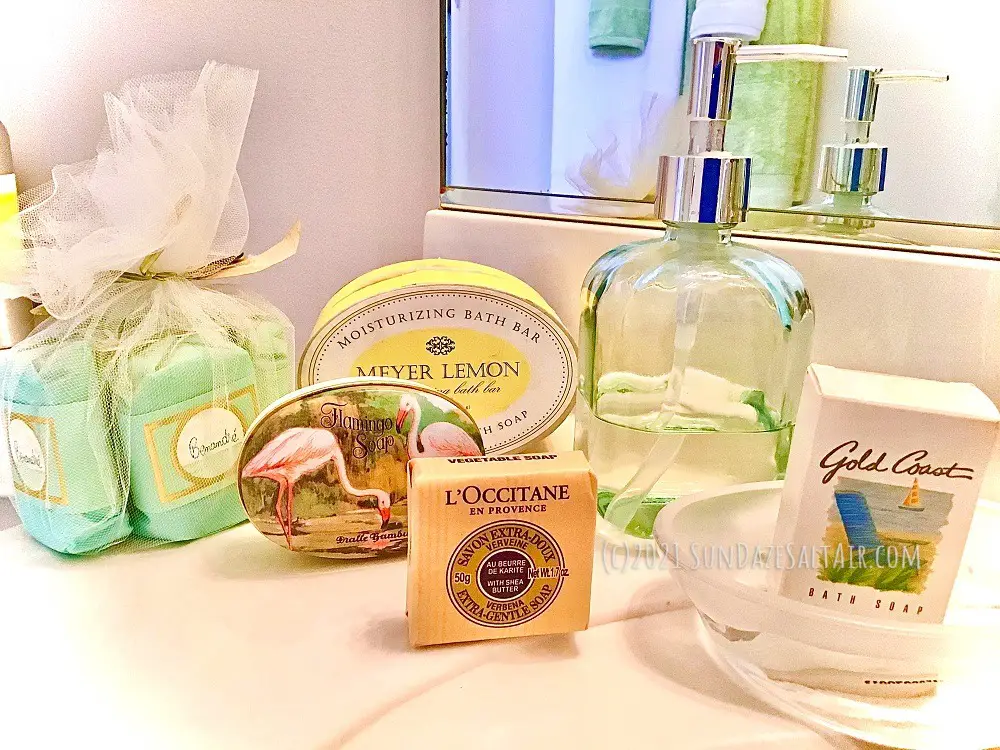
Scent Your DIY Liquid Hand Soap Using Essential Oils
From the invigorating, zesty scents of ginger and citrus to the calming scents of rose and lavender, create your own unique, personalized scent to suit your mood or the season. Let’s face it. Other than their ability to clean, much of the appeal of commercially-sold hand soaps is their huge variety of intoxicating scents. Unfortunately, many of those scents come from synthetic fragrances which have been known to contain phthalates which are endocrine disruptors, along with other potentially harmful chemicals.
Instead, customize the scent of your DIY hand soap with your favorite scent by using a few drops of all-natural essential oils you may have in the house. Just make sure any essential oils you use are well-diluted in a carrier first…
Essential Oil Caution
While essential oils are ubiquitous in many over-the-counter beauty products, including many skincare and makeup products, and certainly make your soaps smell heavenly, essential oils, especially in high doses, can cause allergic reactions. In high concentrations, they can even cause toxicity when absorbed through the skin, especially in children or pets. Also, certain essential oils, especially citrus-based ones, can cause photo-toxicity or skin sensitivity if applied to the skin before sun exposure.
How then are essential oils so prevalent in so many commercially-sold products? The secret is dilution. When used in very small concentrations and diluted in other carrier ingredients, most essential oils can be used safely. Find more information about safely using one of my favorite essential oils, Bergamot, here.
How To Use Essential Oils To Add Fragrance To Your DIY Hand Soap Safely
Use nominal or very small amounts of essential oils and always dilute them in harmless carrier oils or other liquids to prevent adverse reactions. For instance, adding a few drops of essential oil to a larger amount of olive oil or, in the case of hand soap, a larger amount of liquid soap base helps disperse the essential oil. Once the oil is well-diluted in a carrier liquid, it poses less threat of toxicity or adverse reaction to skin.
Choose Some Of These Best Smelling Essential Oils To Scent Your Hand Soap
Do have any essential oils you bought years ago sitting around collecting dust? They are very concentrated so using them sparingly to add fragrance to your DIY hand soap is a great way to repurpose them. Consider adding the following to scent your DIY liquid hand soap:
- Bergamot. For the most delicious summery citrus scent that smells like a combination of grapefruit, orange, & lemon, you can’t go wrong with the aforementioned zesty notes of the renowned Sicilian Bergamot.
- Ginger. The zing-y, warm, spicy scent is redolent of a certain delicious fizzy soda… Mix with bergamot for an energy-inspiring combo that smells like summer in a bottle.
- Rose Absolue. The classic Rose notes are never outdated and remind me of Chloe perfume and of course, an early June pass under a rose-covered arbor…
- Lavender. The calming notes of this favorite may transport you to the South of France or just to a relaxing stop on the way to a good night’s sleep. Either way, these notes will calm you every time you wash your hands.
- Peppermint. These minty notes will invigorate and energize and can be combined with eucalyptus and vanilla for a merry Christmas or winter holiday scent…
- Lemon, Lime or Grapefruit. Much like Bergamot above, these tangy citrus flavors are great for summer or anytime you want to feel like summer.
- Vanilla & Cinnamon. Give your hand soap the aroma of autumn-flavored desserts baking in the oven for Fall, but go easy on the cinnamon oil as it can sting in high concentrations.
- Ylang ylang & Sandalwood. Add a sensual aroma to your hand soap with these exotic Eastern-inspired scents.
DIY Natural Hand Soap Recipe #1 Using Castile Soap
I recommend using glass bottle dispensers if possible. Using glass bottle dispensers can help you and your family avoid potential toxins present in plastic bottles while also being more sustainable & less expensive.
All measurements are approximate and should be adjusted to fit the size of your bottle or container.
Ingredients
12 ounces filtered or distilled water (1.5 cups)
3-4 tablespoons of liquid Castile soap or alternative (Castile soap is typically very concentrated)
1 tablespoon organic olive, sweet almond, castor, coconut or other oil
Contents of two gel capsules of Vitamin E
1 tablespoon honey
Optional:
1 teaspoon of glycerin
2 drops of tea tree oil for antiseptic properties
4-5 drops of your favorite essential oil for scent
1-3 teaspoons table salt (if you want foam-y soap)
Instructions
- Use a funnel to pour the distilled or filtered water into your chosen soap dispenser bottle, about three quarters of the way full.
- Use the funnel to add in your Castile soap or alternative soap base.
- Add your choice of carrier oil and puncture and squeeze in the contents of the Vitamin E capsules, along with the honey, glycerin and/or salt.
- If you are using essential oils, add a few drops to create your chosen scent.
- Place the top back on the dispenser bottle and tighten it so it is well-sealed. Lid tightly in place, shake the bottle or container well so all the ingredients are thoroughly incorporated. Uncap and test for consistency and whether you are pleased with the scent. Adjust as needed until you are satisfied with the finished scent and thickness.
- If the soap is too thick and not dispensing properly, add more water to the mix. For a thicker, less runny soap, add more carrier oil, honey or Castile soap.
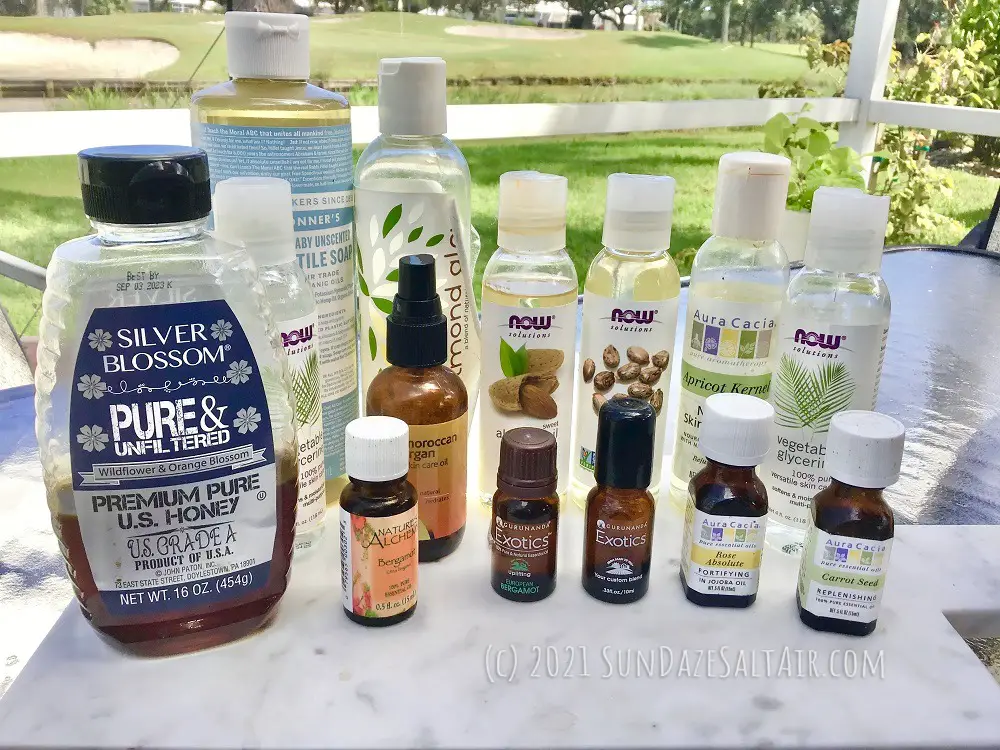
DIY Natural Hand Soap Recipe #2 Using Bar Soap (With Or Without Castile Soap)
Again, I prefer glass bottles with dispenser lids which not only reduce plastic waste, but minimize exposure to chemicals in plastics. Choose the option that works best for you.
As stated above, all measurements are approximate and should be adjusted to fit the size of your bottle or container.
Ingredients
One 4 oz bar of natural soap of your choice such as glycerin, Castile, goat’s milk, oatmeal, coconut, etc.
4- 8 cups filtered or distilled water (use less water for a richer, creamier “body soap” consistency)
1-2 tablespoons organic olive, sweet almond, castor, coconut or other oil
Contents of two to three gel capsules of Vitamin E
1 tablespoon honey
Optional:
1 tablespoon of glycerin
A few drops of tea tree oil for antiseptic properties
5-10 drops of your favorite essential oils for scent
1-3 teaspoons table salt (for foam)
Instructions
- Use a knife or a cheese grater to chop or shred the soap into smaller pieces.
- Place the chunks of soap in a pot and pour the water over it.
- Heat the pot until the soap melts. Stir occasionally to blends all the ingredients evenly.
- Once the soap is melted, remove the pot from the heat and let it cool.
- Once cool, cover the mixture and let it sit for a couple of hours or even overnight.
- After a few hours, once the soap has thickened, use a hand blender or a whisk to ensure all ingredients are combined to a smooth consistency. Notice how much liquid soap was made from one simple bar of soap.
- If you are satisfied with the consistency, use a funnel to transfer your new liquid hand soap into the dispenser(s) of your choice. If the consistency is too thick, you can always add more hot or warm water to thin it out until it meets your expectations.
Enjoy The Cost Savings & Skin Soothing Benefits Of Making Your Own DIY Soaps & Never Get Caught Empty-Handed In The Event Of Store Shortages
Not only is this DIY liquid hand soap easy to make but it can save you money over time while allowing you to use up common household items like old soaps, oils and essential oils. Plus, when you control the ingredients, you can avoid harsh, irritating and potentially dangerous chemicals found in most commercially-available hand soaps.
Bookmarking these simple recipes will ensure that you never run out of important cleaning supplies even if the stores do…
********
Have you ever made DIY soaps or cleansers? What’s your favorite method? Let us know in the comments!


You May Also Like

File Cabinet Decluttering: How Long Do I Have To Keep Old Financial Files? When To Throw Out Old Bills, What To Keep & How Long
September 14, 2021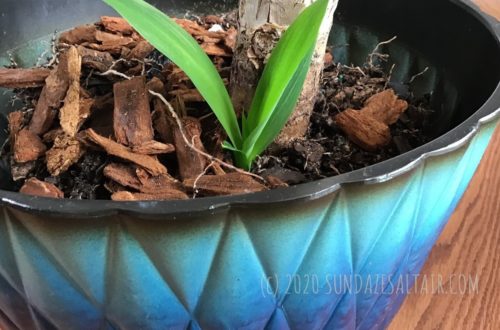
What Is Growing Out Of My Yucca? How To Easily Grow A New Yucca From Side Shoots
July 3, 2021